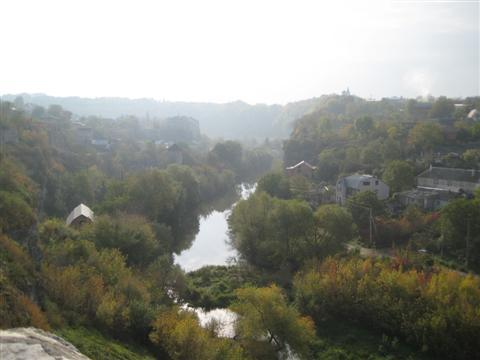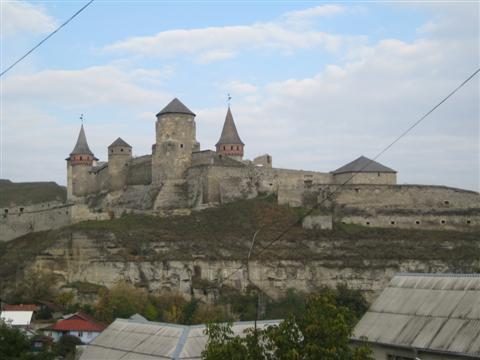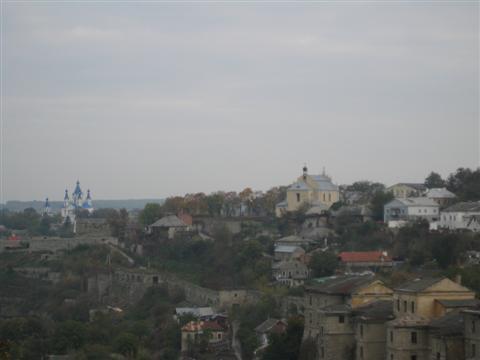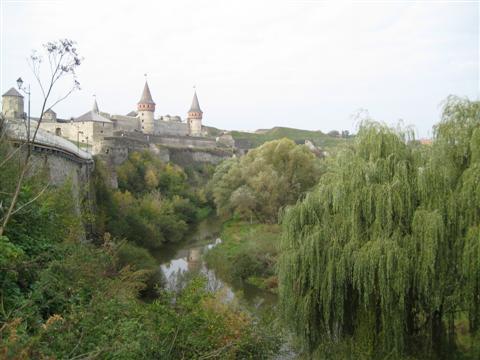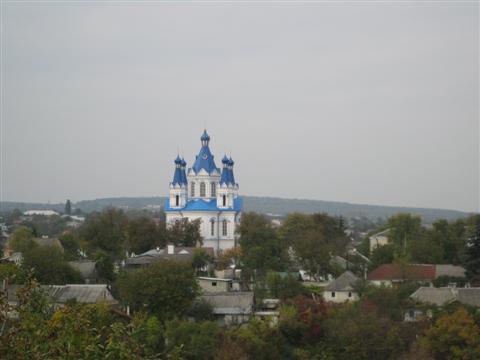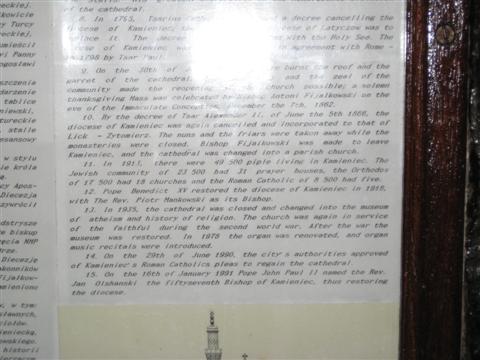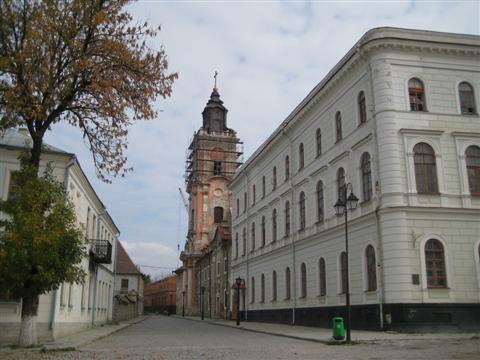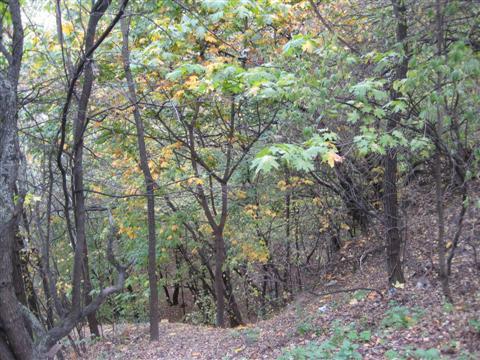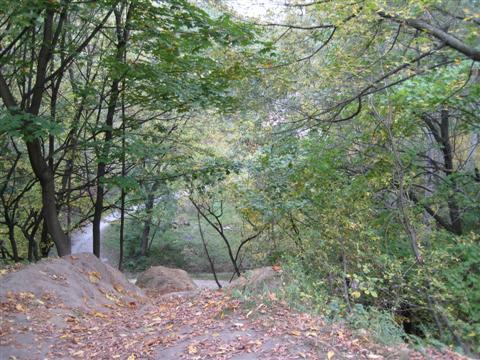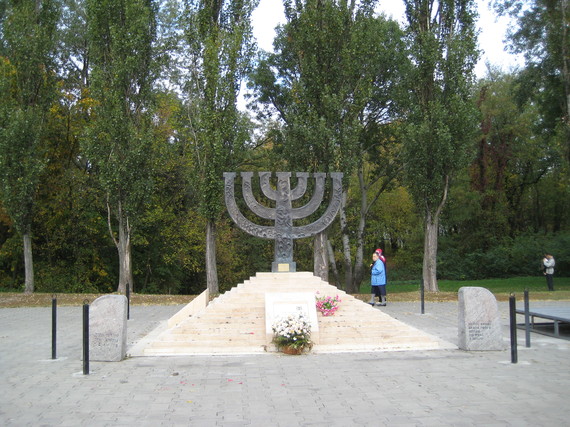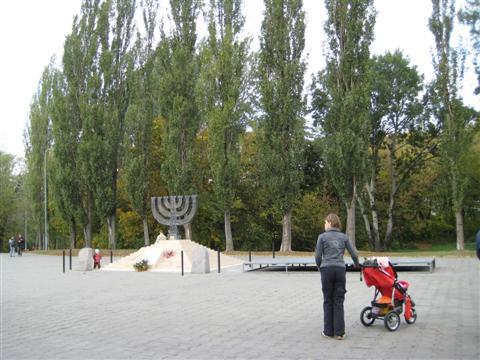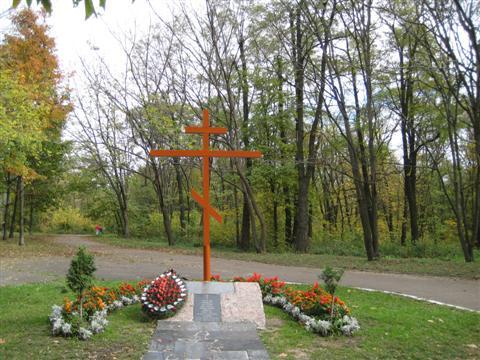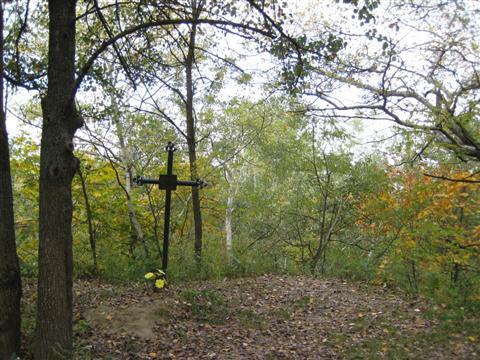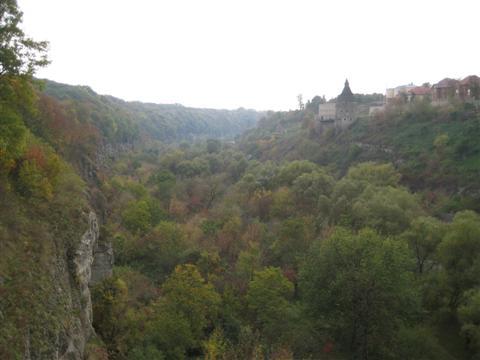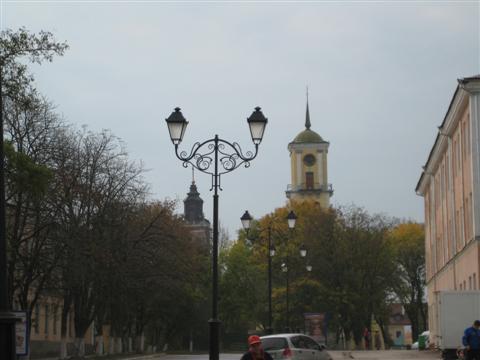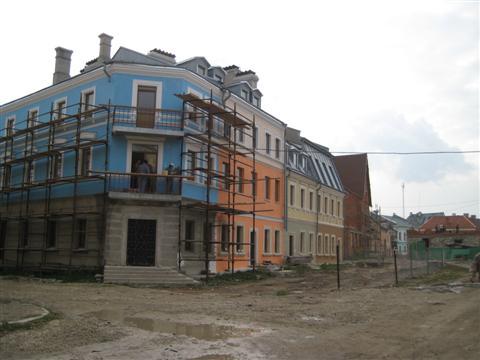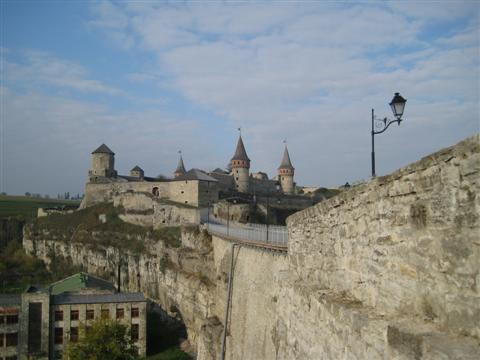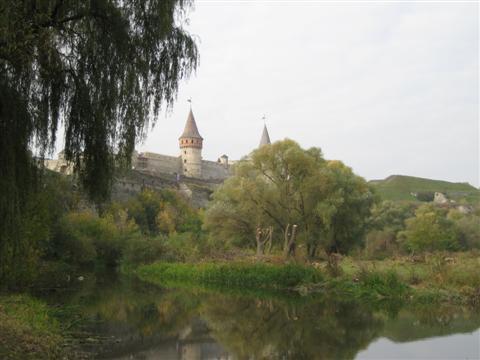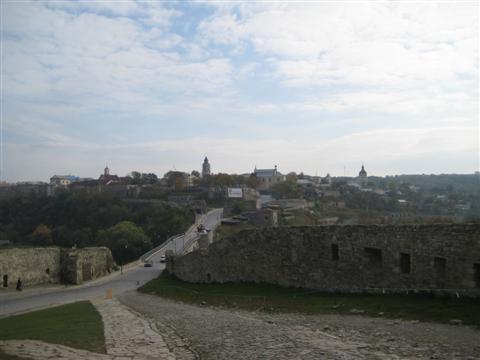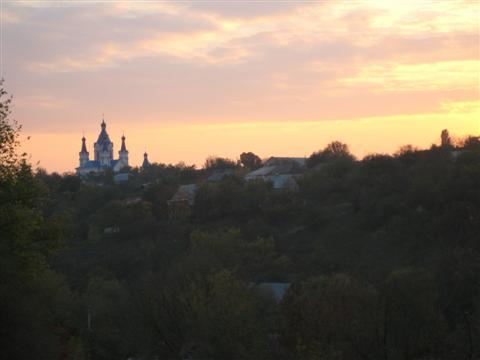Smotrich River
Yet 73 years ago this week, in the space of three days, 23,600 Jews were slaughtered in the forests, fields and copses surrounding Kamyanets-Podilsky, as duly reported in bureaucratic mission-accomplished fashion by local SS leader Friedrich Jeckeln to his boss back in Berlin, Gestapo chief Heinrich Himmler.
The castle
On August 26, 1941, between 12,000 and 14,000 Jews, who had already been deported to this 1,000-year-old town from then Hungarian-ruled Carpathia, were assembled at the train station after being told they were going home or would be resettled in Palestine. They were then herded to Europe's first major killing fields of WWII near a munition's depot on the city's outskirts.
There, stripped of their valuables and sometimes clothes, they were mowed down by the relentless machine-guns of German SS troops and their Hungarian and Ukrainian abettors, their bodies left in pits.
View over town
On the following two days it was the turn of some 10,000 members of a Jewish community that had called the narrow streets and evocative buildings of this hilltop town home since the middle ages. Rousted from their houses by German troops and their local allies on the same tale of being resettled in Palestine, they were marched to the previous day's killing fields and massacred.
A castle view
Away from the Auschwitz death camp and the massive industrial slaughter houses of the Holocaust that still stand as memorials to the murderous evil of Nazi Germany, away from official monuments like those in the pulverized Warsaw Ghetto, here in the literal killing fields of Europe scant markers bear witness to atrocities at the site where they were perpetrated.
Before there was the Babi Yar massacre immortalized by Soviet poet Yevgeny Yevtushenko, before there was the Odessa massacre perpetrated by Germany's Romanian allies, there was Kamyanets-Podilsky.
An orthodox church
The historic old town atop a ridge in the Carpathian Mountains above the Smotrich River, where it wends its way in an almost complete loop through the steep tree-carpeted ravine, is today much as those Jews would have seen it on their last day.
Today there is a stone pyramidal memorial in the town's Jewish cemetery, commemorating the murder of some 800 Jewish children and elderly taken a year later from the 5,000 remaining Jews who were forced into a ghetto. At the killing fields two plaques memorialize the "fathers, mothers, brothers and sisters tortured to death."
Another castle view
In the Catholic Cathedral a document posted up on a wall shows that in 1913 Jews were the largest single community, although slightly outnumbered by all Christians taken together. Of 49,500 people, 23,500 were Jews with 31 synagogues, while there were over 17,000 orthodox Christians and 8,000 Catholics. A single synagogue facade remains.
Document on wall of Catholic church
Kamyanets-Podilsky old town
In 1941 the Kamyanetz-Podlisky massacre was overtaken in its enormity within a month by Babi Yar, when 33,771 Jews were slaughtered in a single operation on September 29-30 in a wooded ravine in the northern suburbs of Kiev, Ukraine's capital.
Babi Yar ravine and woods
The site hosted many later massacres. More than 100,000, perhaps 200,000 people are estimated to have been slaughtered here, including tens of thousands more Jews, Russian prisoners of war, Ukrainian nationalists and Roma, by the time the Germans and their Ukrainian sympathisers were driven out of Kiev in 1944.
Another view
After the end of the war Soviet Communist authorities banned any memorials to the Jews massacred at the site. In 1976 they erected a horizontal concrete column with sculptures in heroic or tormented poses in a memorial to the Soviet citizens and prisoners of war shot here.
It was only after the fall of communism and Ukraine's independence that a bronze menorah, the traditional seven-branch candelabrum of ancient Israel, was erected in 1991 at the head of the ravine in Babi Yar's killing field, 50 years to the day after the first massacre was perpetrated here.
Menorah
It looks not all that different from the one Emperor Titus seized from the temple in Jerusalem in the year 70 and portrayed on his triumphal arch in Rome.
Several crosses commemorate specific Christians killed here, including 621 Ukrainian nationalists and two Orthodox priests.
Memorial to Christians murdered
Another cross memorial
Wandering in Kamyanets-Podilsky and Babi Yar, contemplating the enormity of the horror, you have to wonder what in hell is really behind those who call Israel's recent campaign in Gaza genocidal, like Turkish President Recep Tayyip Erdoğan who said it was worse than the Nazi atrocities.
Kamyanets old town
"You can see that what Israel does to Palestine, to Gaza right now, has surpassed what Hitler did to them," he told CNN in an interview, while also saying he doesn't "approve" or "accept" what Hitler did to the Jews.
However horrible it is that Palestinian children and civilians have been blown to pieces in Gaza, and without going into the intricacies of either side's narrative, it is not Kanyanets-Podilsky or Babi-Yar.
Kamyanets old town
Another view
Whether he wishes it or nor, Erdoğan's statement seems tantamount to Holocaust denial, since he calls the killing of over 2,100 Palestinians in military actions worse than what the Germans did in these two killing fields -- let alone in the massive industrial death camps of Auschwitz and elsewhere. He sees them as paling in comparison to Israel's Gaza campaign, completely brushing over the huge qualitative and quantitative differences in intent, circumstances and numbers.
Erdoğan earned a high school diploma from Eyüp school and studied Business Administration at the Aksaray School of Economics and Commercial Sciences in Istanbul, so presumably he knows how to count and to calculate that more than 2,100 in seven weeks is a somewhat lesser rate than 23,600 in three days or 33,771 in two days.
Castle view
Another castle view
Therefore to rationally justify his rhetoric he would need to join the ranks of the Holocaust-deniers to discount and miscount Kamyanets-Podilsky and Babi Yar, let alone Auschwitz, seeing that proportionality is one of the planks in an argument in which he slammed Israel for 'disproportionate' use of force in its 'Hitler-surpassing barbarism.'
He clearly needs a refresher course in mathematical relativity, let alone those of circumstance and intent. He doesn't need to go to Auschwitz and the other grim fortresses of death that saw millions slaughtered to meditate on the logic of his statements.
I can suggest no better place for him to begin than here in the glorious tourist-friendly foothills of the Carpathian Mountains, in Kamyanets-Podilsky, at the intersection of natural beauty and horrific history.
Kamyanets-Podilsky
Let him spend a few hours in this spectacular setting, let him gaze at the castle that played a significant role in Europe's defence against his own invading Ottoman ancestors, and let him contemplate on the qualitative and quantitative nature and intent of what occurred here.
______________
By the same author: Bussing The Amazon: On The Road With The Accidental Journalist, available with free excerpts on Kindle and in print version on Amazon.
